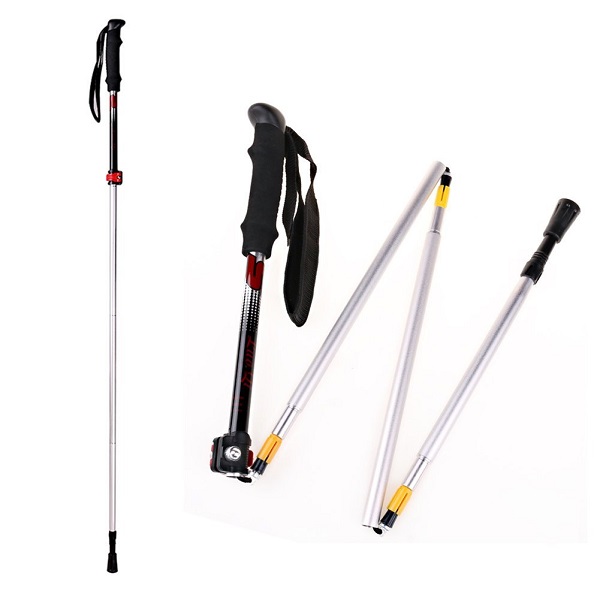1. The 7075 aluminum ski trekking poles
Although aluminum alpenstock is usually cheaper, they are also more durable than carbon fiber alpenstock.If you don't care if it weighs 100 grams or 2 grams, aluminum alpenstock is probably the best choice.Their durability also makes them a good partner for long/heavy hiking trails.During long/heavy hiking trips, you will need to deal with extreme situations that may even be damaged.Aluminum alloys can still be used after bending, or they can be carefully bent back to their original shape, and carbon fibers can break under harsh conditions. Aluminum rods are usually of the higher grade 7075-T6 or 7075 aluminum ski trekking poles to be more durable (harder to start with) and can bend and still be used, while carbon fiber bends very little and can break if pushed too far.The aluminum rods range in weight from about 16 ounces (455g) to about 22 ounces (625g) per pair.One thing to consider is that not everyone needs a more durable product.If you're mainly hiking during the day or backpacking on mountain roads, you can use a fairly light trekking stick.We even used the Black Diamond Ultra Distance on many rocky, trackless terrain, but we were more careful and realized that it was easier to break it in doing so.
2. The carbon fiber
Advances in carbon fibre technology have enabled alpenstock makers to create alpenstock with the strength and weight of aluminium alloy.However, aluminium is still a more durable and reassuring material.Carbon fiber helps cushion and improve comfort.If you are mainly based on short leisure routes or pursuing lightweight, carbon fiber alpenstock is your best choice.While some high-end carbon fiber alphas are equally durable, they require careful use.








